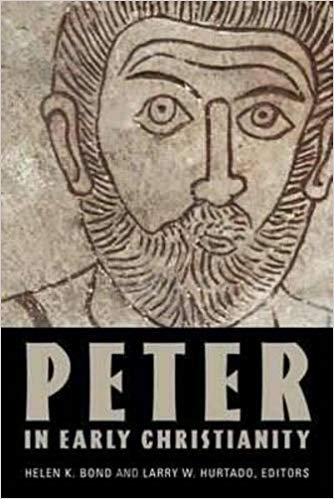Paul Hartog’s essay concerns itself with the reception of Peter, particularly, it would appear in basically Pauline contexts. Using the image of the matroishka doll he concludes “both 1 Clement [addressed to the Pauline converts in Corinth and showing a knowledge of 1 Corinthians] and especially Polycarp’s Philippians see to
‘nest’ their reception of Peter within their overt receptions of Paul. However 1 Clement explicitly mentions the figure of Peter, while Philippians manifests an anonymous use of Petrine traditions [i.e. 1 Peter in particular and extensively]. In this manner ‘Peter’ has a role to play in each of these two epistles written to Pauline churches” (p.180). What this also bears witness to, is that there were still several different streams of early Christianity indebted to one or another apostle or early co-worker of an apostles and there was just the beginnings of attempts to address a wide swath of churches both Pauline, Johannine, and Petrine (something we see perhaps for the first time in 2 Peter). It is Hartog’s theory that Polycarp, despite rather clear and extensive use of 1 Peter, does not mention Peter by name “because that apostle has no particular authority with the Philippians” (p. 177). This seems to me to likely be correct, because there still were diverse streams of early Christianity, some of them mostly Jewish some of them mostly Gentile and going back ultimately to the original division of labor in which Paul and his co-workers would concentrate on Gentiles, while Peter, and James and probably the Beloved Disciple would focus on Jews, though there was some overlap. The parceling out of the mission tasks was not done on a geographical basis but rather largely on an ethnographical basis, and even Paul agreed that the Gospel was the for the Jew first, even though in due course it was much more widely accepted by Gentiles.
William Rutherford draws our attention to an interesting passage in the pseudo-Clementine Recognitions 1.27-31 which draws on the scenario of Peter before Caiaphas as described in Acts 4. But in this reboot of that material Peter responds to the high priest saying “If, as you claim, I am an ignorant and uneducated man, a fisherman and a rustic, and I confess I know more than the sages, this should greatly alarm you….If we had obtained instruction and then refuted your sages, this would be a work of time and diligence that is of natural disposition and not of God’s power. Yet since we untrained men refute you who are wise, who would not realize that our abilities come from the will of God?” (see pp. 182-83). Interestingly, there was considerable pushback against Peter and his tradition in Gnostic circles, as witnessed by the document called the Preach of Peter in which Peter tests the very saying of Jesus against Scripture and here Peter is depicted as a scribe, a work known to Clement of Alexandria. This Preaching document depicts knowledge as the key to salvation, and Peter’s testing of the sayings and events of Jesus against Scripture, finding that his life, death, and resurrection all confirmed in Scripture lead to his proclamation of Christ. There is as well a decidedly anti-Judaean or anti-Semitic tone to the document. Judaean temple worship is now seen as obsolete. A great deal of time is spent in much of the rest of this volume tracing the varied reception of Peter in numerous Gnostic documents which are too late and two far from the mainstream of Christianity in the second-fourth centuries to really reveal to us anything about the historical Peter and his early roles and contributions to Christianity. This being the case we will move on to the final two major essays by Parvis and Lampe in the next post.













